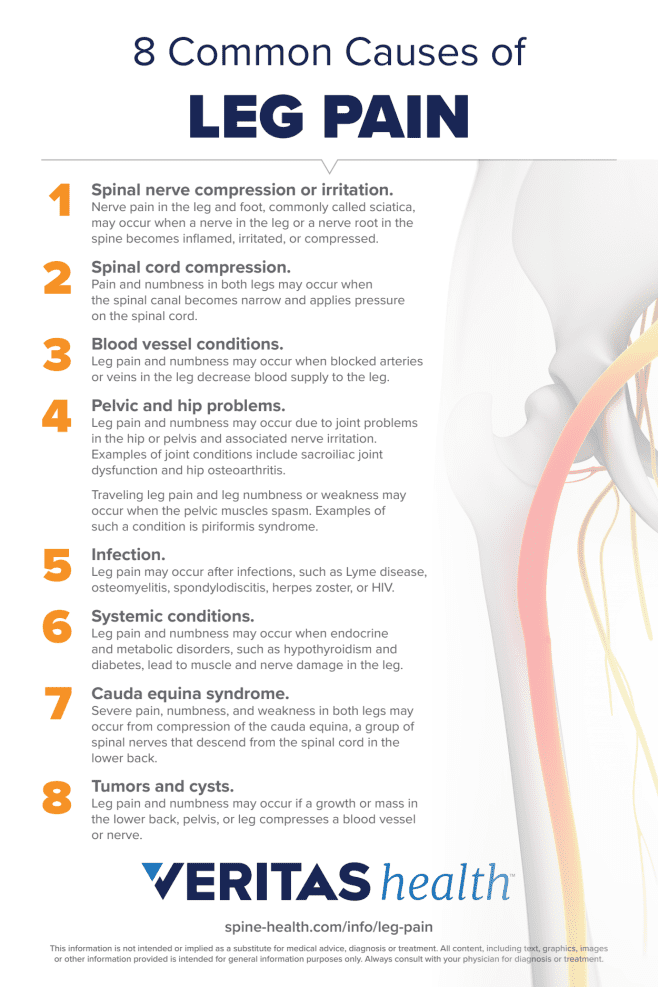- Spinal nerve compression or irritation. Nerve pain in the leg and foot, commonly called sciatica, may occur when a nerve in the leg or a nerve root in the spine becomes inflamed, irritated, or compressed.
- Spinal cord compression. Pain and numbness in both legs may occur when the spinal canal becomes narrow and applies pressure on the spinal cord.
- Blood vessel conditions. Leg pain and numbness may occur when blocked arteries or veins in the leg decrease blood supply to the leg.
Pelvic and hip problems. Leg pain and numbness may occur due to joint problems in the hip or pelvis and associated nerve irritation. Examples of joint conditions include sacroiliac joint dysfunction and hip osteoarthritis.
Traveling leg pain and leg numbness or weakness may occur when the pelvic muscles spasm. Examples of such a condition is piriformis syndrome.
- Infection. Leg pain may occur after infections, such as Lyme disease, osteomyelitis, spondylodiscitis, herpes zoster, or HIV.
- Systemic conditions. Leg pain and numbness may occur when endocrine and metabolic disorders, such as hypothyroidism and diabetes, lead to muscle and nerve damage in the leg.
- Cauda equina syndrome. Severe pain, numbness, and weakness in both legs may occur from compression of the cauda equina, a group of spinal nerves that descend from the spinal cord in the lower back.
- Tumors and cysts. Leg pain and numbness may occur if a growth or mass in the lower back, pelvis, or leg compresses a blood vessel or nerve.
This information is not intended or implied as a substitute for medical advice, diagnosis or treatment. All content, including text, graphics, images or other information provided is intended for general information purposes only. Always consult with your physician for diagnosis or treatment.

